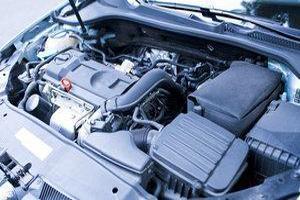Event Data Recorders: What They Are and Why They Matter
 In the past, personal injury trials arising from car accidents involved a judge or jury trying to determine fault and responsibility by sifting through conflicting testimony from the drivers and any expert witnesses they hired to support their claims. On occasion, a witness to the accident, debris and skid marks, or other objective evidence was available to provide some support to one driver’s version of events or the other. But where objective evidence was nonexistent, a verdict depended mostly on which driver’s story seemed more credible.
In the past, personal injury trials arising from car accidents involved a judge or jury trying to determine fault and responsibility by sifting through conflicting testimony from the drivers and any expert witnesses they hired to support their claims. On occasion, a witness to the accident, debris and skid marks, or other objective evidence was available to provide some support to one driver’s version of events or the other. But where objective evidence was nonexistent, a verdict depended mostly on which driver’s story seemed more credible.
Many cars are now equipped with EDR devices, or event data recorders. Some refer to these devices as “black boxes” for cars, as they take and record several different measurements in the moments before a crash. Specialists with the education and knowledge to read and interpret this data (sometimes referred to as reconstructionists) can then provide information regarding a car’s speed, movements, and activities – literally recreating the moments leading up to the crash. This data can provide much needed certainty and clarity regarding causation and any comparative fault in auto injury cases.
What Information is Contained in a Car’s EDR?
General Motors first put electronic data recording devices in cars as a means of taking important measurements concerning a vehicle’s safety equipment. Today cars can be equipped with a variety of EDRs, including the airbag control module (ACM), the engine control module (ECM), and/or the powertrain control module (PCM). Some of the data that can be retrieved from these EDRs includes:
- Data from several seconds before the crash;
- Speed of the vehicle;
- Severity of the crash;
- Whether seatbelts were engaged;
- Engine throttle;
- Brake switch and brake lamp statuses;
- Shift gear position;
- Yaw rate; and
- Tire pressure.
Reconstructionists and law enforcement agencies are able to download this information using specialized devices and software. In the hands of an experienced reconstructionist, this data can be used in conjunction with other evidence such as pictures, skid marks, and the driver’s own version of events to help a judge or jury understand what happened in the moments leading up to a crash.
Are There Limitations to EDRs?
Electronic data recorders are not helpful in all cases. There are a number of circumstances that can render EDRs not helpful or even available in some cases. These include:
- Where a car is an older model and is not equipped with EDRs;
- Where the data cannot be retrieved from the EDR;
- Where there is a malfunction in the EDR;
- Where a crash is minor such that the EDR is not activated;
- Where the data provided by the EDR seems to conflict with witness testimony and/or other physical evidence; or
- Where the EDR data is not properly preserved and becomes irretrievably lost.
Our Attorneys Can Help You
It takes an experienced Hartford, CT personal injury attorney to know when EDR is available and helpful in a case as well as to have the resources and professional relationships necessary to retrieve and use that information. At the Woolf & Ross Law Firm, LLC, we are knowledgeable about car accidents and how to help you recover the damages you deserve. Where EDR data can help you win your case, we know how to obtain and use this data effectively. Call 860-290-8690 to schedule an initial consultation.






